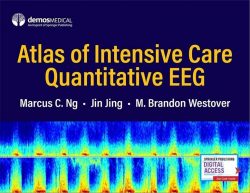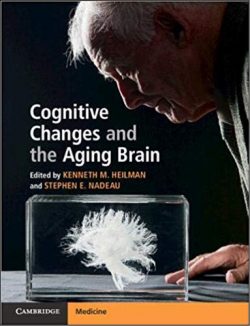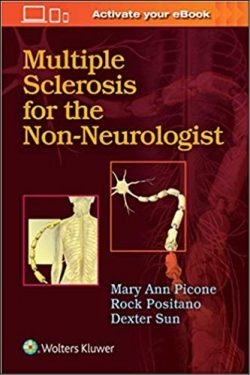Fundamental biochemical studies of basic brain metabolism focusing on the neuroactive amino acids glutamate and GABA combined with the seminal observation that one of the key enzymes, glutamine synthetase is localized in astroglial cells but not in neurons resulted in the formulation of the term “The Glutamate-Glutamine Cycle.” In this cycle glutamate released from neurons is taken up by surrounding astrocytes, amidated by the action of glutamine synthetase to glutamine which can be transferred back to the neurons. The conversion of glutamate to glutamine is like a stealth technology, hiding the glutamate molecule which would be highly toxic to neurons due to its excitotoxic action. This series of reactions require the concerted and precise interaction of a number of enzymes and plasma membrane transporters, and this volume provides in-depth descriptions of these processes. Obviously such a series of complicated reactions may well be prone to malfunction and therefore neurological diseases are likely to be associated with such malfunction of the enzymes and transporters involved in the cycle. These aspects are also discussed in several chapters of the book.
A number of leading experts in neuroscience including intermediary metabolism, enzymology and transporter physiology have contributed to this book which provides comprehensive discussions of these different aspects of the functional importance of the glutamate-glutamine cycle coupling homeostasis of glutamatergic, excitatory neurotransmission to basic aspects of brain energy metabolism. This book will be of particular importance for students as well as professionals interested in these fundamental processes involved in brain function and dysfunction.
Introduction to the Glutamate-Glutamine cycle.- Glucose, lactate, β-hydroxybutyrate, acetate, GABA, and succinate as substrates for synthesis of glutamate and GABA in the glutamine-glutamate/GABA cycle.- Anaplerosis for glutamate synthesis in the neonate and in adulthood.- Enzyme complexes important for the glutamate-glutamine cycle.- BCAA metabolism and NH3 homeostasis.- Glutaminases Vesicular Glutamate Uptake.- The glutamine transporters and their role in the Glutamate/GABA-Glutamine Cycle.- Glutamine Metabolism in Gliomas.- Oligodendrocytes: development, physiology and glucose metabolism.- Dysregulation of glutamate cycling mediates methylmercury-induced neurotoxicity.- Astroglia, glutamatergic transmission and psychiatric diseases.- Glutamine Synthetase: Role in Neurological Disorders.- The Glutamate – Glutamine Cycle in Epilepsy.- Index.
Arne Schousboe obtained his M.Sc. in biochemistry from The University of Copenhagen in 1968 at a time where an M. Sc. was considered equivalent to a Ph.D. He subsequently (1978) earned his Doctor of Science (D. Sc.) degree also from University of Copenhagen. After a post-doc period with Dr. Eugene Roberts at the Department of Neuroscience, City of Hope National Medical Center in Los Angeles 1972-1973 he came back to the University of Copenhagen to resume a tenured position as Assoc. Prof. at the Medical Faculty. In 1990 he moved to the Royal Danish School of Pharmacy, Copenhagen as a Full Professor of Biochemistry and has remained in this position also when this Institution changed to become an independent University and subsequently a Faculty of Pharmaceutical Sciences, University of Copenhagen which lately was incorporated in the Faculty of Health and Medical Sciences still at the University of Copenhagen . He has served as the Department Chair from 2005 to 2010 and is now part time Professor of Neuropharmacology in Department of Drug Design and Pharmacology at University of Copenhagen. He has been working on astrocyte function focusing on amino acid neurotransmission during the past more than 4o years and is currently engaged in studies of glutamate and GABA homeostasis and metabolism. He has published over 550 papers on these and related topics. He has served on the Editorial Board on numerous neuroscience journals over the years and is currently the Editor-in-Chief of Neurochemical Research and Editor of the book series Advances in Neurobiology.
Ursula Sonnewald received her Ph.D. degree in Chemistry at the University of Saskatchewan, Saskatoon (Canada) and subsequent to studies in Hamburg (Germany) and Canada; post-doctoral periods were spent in Salt Lake City, University of Utah, USA, in Copenhagen at the Carlsberg Research Center, Denmark, and at The Brookhaven National Laboratory in Upton, New York, USA. For five years she worked in the CNS Department of Novo Nordisk developing antiepileptic drugs. During this period she synthesized the GABA uptake inhibitor Tiagabin, which is on the market as an antiepileptic drug and as a tool for basic research on GABA function and metabolism. In 1990 she moved to Norway, and was amongst the first in the area of metabolic studies of brain cell metabolism using magnetic resonance spectroscopy (MRS) in collaboration with the experts on nervous cell cultures Drs. Arne Schousboe and Niels Westergaard. Since 1996 she has been a full Professor at the Department of Neuroscience at the Norwegian University of Science and Technology. She applied MRS to animal models of epilepsy, stroke, schizophrenia, Alzheimer’s and other neurological disorders. Exciting new results have been obtained pertinent to the area of neurodegeneration. She has developed tools to analyze mitochondrial function and has applied those to study dysfunction in the above mentioned diseases.
Fundamental biochemical studies of basic brain metabolism focusing on the neuroactive amino acids glutamate and GABA combined with the seminal observation that one of the key enzymes, glutamine synthetase is localized in astroglial cells but not in neurons resulted in the formulation of the term “The Glutamate-Glutamine Cycle.” In this cycle glutamate released from neurons is taken up by surrounding astrocytes, amidated by the action of glutamine synthetase to glutamine which can be transferred back to the neurons. The conversion of glutamate to glutamine is like a stealth technology, hiding the glutamate molecule which would be highly toxic to neurons due to its excitotoxic action. This series of reactions require the concerted and precise interaction of a number of enzymes and plasma membrane transporters, and this volume provides in-depth descriptions of these processes. Obviously such a series of complicated reactions may well be prone to malfunction and therefore neurological diseases are likely to be associated with such malfunction of the enzymes and transporters involved in the cycle. These aspects are also discussed in several chapters of the book.
A number of leading experts in neuroscience including intermediary metabolism, enzymology and transporter physiology have contributed to this book which provides comprehensive discussions of these different aspects of the functional importance of the glutamate-glutamine cycle coupling homeostasis of glutamatergic, excitatory neurotransmission to basic aspects of brain energy metabolism. This book will be of particular importance for students as well as professionals interested in these fundamental processes involved in brain function and dysfunction.
Provides a detailed discussion of current research on the glutamate-glutamine cycle
Leading experts cover the activity and regulation of relevant enzymes
Suitable for students and researchers interested in metabolic coupling between astrocytes and neurons





